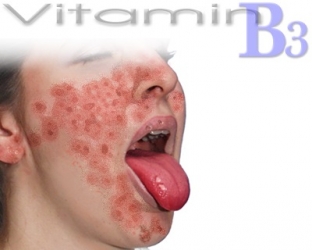Pellagra – a disease that occurs as a result of a lack of tryptophan, nicotinamide and B vitamins in the body. This disease occurs as a result of an unbalanced diet with a predominance of carbohydrates in food, as well as enteritis, alcoholism, cirrhosis of the liver and other diseases of the digestive system. Pellagra is manifested by dermatitis, ulcers in the oral cavity, diarrhea and mental disorders, depressive states, notes estet-portal.com. Mostly pellagra is observed in spring and summer.
The main causes of pellagra
The main reason that leads to the development of pellagra – deficiency of B vitamins. This phenomenon may be due to:
- regular stress and severe physical fatigue;
- alcoholism (when alcohol is abused, irreversible changes occur in the liver);
- violations of the processes of absorption of vitamins due to diseases of the digestive tract. Pellagra can develop against the background of peptic ulcer, hyperacid gastritis and chronic gastroenteritis;
- prolonged fasting, improper use of diet for weight loss;
- exposure to negative environmental influences;
- diseases of an infectious nature (tuberculosis, dysentery, etc.);
- long-term use of drugs that remove vitamins B and PP from the body;
- insufficient and unbalanced nutrition. The development of the disease may be associated with a lack of whole grains, green vegetables and protein products in the diet.
Read also: Nicotinic acid deficiency. How to prevent pellagra
Pellagra symptoms
 Spring avitaminosis has a very strong effect on patients with pellagra, often the symptoms of this disease become aggravated during this period. The main symptoms of pellagra include:
Spring avitaminosis has a very strong effect on patients with pellagra, often the symptoms of this disease become aggravated during this period. The main symptoms of pellagra include:
- Skin changes. Often, it is the skin symptoms of pellagra that are the earliest signs of pellagra. The disease affects the skin in exposed areas often exposed to sunlight:
- face, forearms,
- brushes,
- neck,
- feet and shins.
Initially, the changes on the skin resemble a sunburn, and over time they turn into red-brown spots.
Skin lesions are usually symmetrical. The skin in the lesion is dry and rough, the surface is covered with small scales. hyperpigmentation.
appears- Among symptoms of pellagra, there are also general disorders:
- lack of appetite,
- sleep disorders,
- weakness,
- instability of the emotional background.
- Swelling of the lips, tongue, manifestations stomatitis, cheilitis, glossitis.
- , diarrhea. Disorders of neuromuscular activity: depression
- , fear and dementia, pellagrozny polyneuritis. Specialities in the treatment of pellagra
Patients with pellagra should undergo inpatient treatment, during which they are prescribed drugs of nicotinic acid in the form of injections. In addition, patients need to take B vitamins and ascorbic acid. Acute skin manifestations are treated with corticosteroid ointments.
For acute neurological disorders, the following are prescribed:
tranquilizers,
- antipsychotics,
- antidepressants.
Prevention of pellagra development
If treatment is not started on time, pellagra can lead to the death of the patient within 4-5 years. To protect yourself from the development of this disease, it is important to eat well, giving preference
dishes with sufficient protein content.It is also worth limiting consumption of alcoholic beverages and timely start treatment of diseases of the gastrointestinal tract. Take care of your health with estet-portal.com.






Add a comment